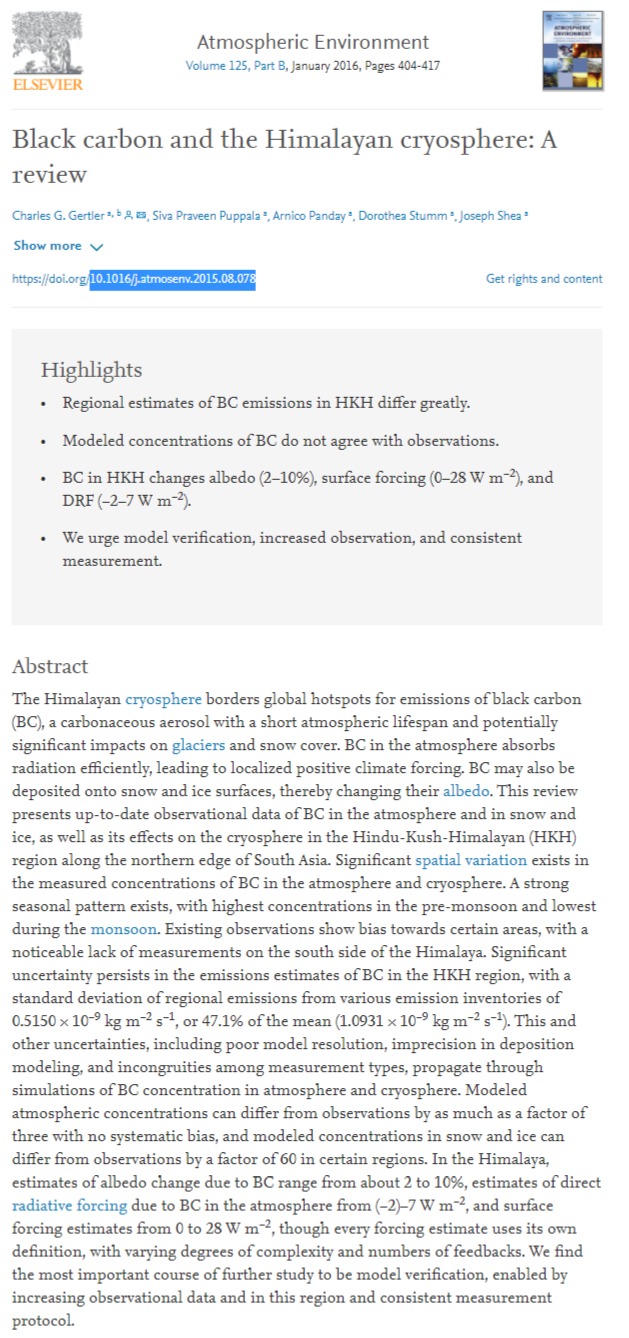
The Himalayan cryosphere borders global hotspots for emissions of black carbon (BC), a carbonaceous aerosol with a short atmospheric lifespan and potentially significant impacts on glaciers and snow cover. BC in the atmosphere absorbs radiation efficiently, leading to localized positive climate forcing. BC may also be deposited onto snow and ice surfaces, thereby changing their albedo. This review presents up-to-date observational data of BC in the atmosphere and in snow and ice, as well as its effects on the cryosphere in the Hindu-Kush-Himalayan (HKH) region along the northern edge of South Asia. Significant spatial variation exists in the measured concentrations of BC in the atmosphere and cryosphere. A strong seasonal pattern exists, with highest concentrations in the pre-monsoon and lowest during the monsoon. Existing observations show bias towards certain areas, with a noticeable lack of measurements on the south side of the Himalaya. Significant uncertainty persists in the emissions estimates of BC in the HKH region, with a standard deviation of regional emissions from various emission inventories of 0.5150 × 10−9 kg m−2 s−1, or 47.1% of the mean (1.0931 × 10−9 kg m−2 s−1). This and other uncertainties, including poor model resolution, imprecision in deposition modeling, and incongruities among measurement types, propagate through simulations of BC concentration in atmosphere and cryosphere. Modeled atmospheric concentrations can differ from observations by as much as a factor of three with no systematic bias, and modeled concentrations in snow and ice can differ from observations by a factor of 60 in certain regions. In the Himalaya, estimates of albedo change due to BC range from about 2 to 10%, estimates of direct radiative forcing due to BC in the atmosphere from (−2)–7 W m−2, and surface forcing estimates from 0 to 28 W m−2, though every forcing estimate uses its own definition, with varying degrees of complexity and numbers of feedbacks. We find the most important course of further study to be model verification, enabled by increasing observational data and in this region and consistent measurement protocol.